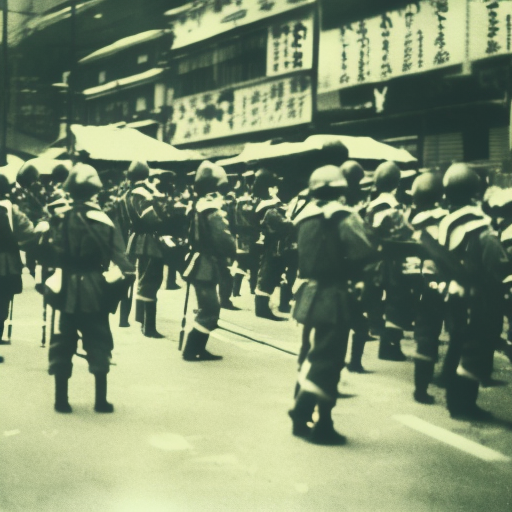Battle of Tabu-dong: A Decisive Clash in the Korean War
The Battle of Tabu-dong, fought during the Korean War on July 20-21, 1950, was a crucial engagement between United Nations (UN) forces, primarily composed of American and South Korean troops, and the North Korean People’s Army (NKPA). This battle took place near the village of Tabu-dong, located in the southern part of South Korea, and played a significant role in shaping the outcome of the war.
Background:
At the onset of the Korean War, North Korean forces, under the command of General Kim Il-sung, launched a surprise invasion of South Korea on June 25, 1950. The NKPA swiftly advanced, capturing Seoul and pushing UN forces to the southern tip of the Korean Peninsula. However, the UN, led by the United States, quickly intervened to support South Korea and halt the North Korean advance.
The Battle:
The Battle of Tabu-dong was part of the larger UN counteroffensive, aimed at pushing back the NKPA and liberating South Korea. The battle began on July 20, 1950, when the US 25th Infantry Division, supported by South Korean troops, launched an assault on the NKPA’s defensive positions near Tabu-dong.
The initial phase of the battle saw intense fighting as UN forces encountered well-entrenched NKPA troops. The rugged terrain and dense vegetation made the advance difficult, but the UN forces pressed on, determined to break through the enemy lines. The battle raged throughout the day, with both sides suffering heavy casualties.
Key Turning Points:
Despite the initial difficulties, the UN forces managed to gain ground and make significant progress on the second day of the battle. The turning point came when American tanks, supported by artillery fire, broke through the NKPA’s defenses, allowing infantry units to advance. This breakthrough forced the NKPA to retreat, and the UN forces seized control of Tabu-dong.
Significance:
The Battle of Tabu-dong was a pivotal moment in the Korean War. It marked a major victory for the UN forces and dealt a significant blow to the NKPA. The battle demonstrated the effectiveness of combined arms tactics, with tanks, artillery, and infantry working in coordination to overcome a well-entrenched enemy.
Moreover, the battle had strategic implications. The capture of Tabu-dong allowed the UN forces to establish a foothold in southern South Korea, which would later serve as a launching point for further offensives. It also boosted the morale of the UN troops and provided a much-needed confidence boost after the initial setbacks in the war.
Aftermath:
Following the Battle of Tabu-dong, the UN forces continued their advance, pushing the NKPA further north. The battle set the stage for subsequent UN victories, such as the Battle of Inchon and the recapture of Seoul. Ultimately, the UN forces succeeded in pushing the NKPA back across the 38th parallel, effectively reversing the initial North Korean invasion.
The Battle of Tabu-dong was a turning point in the Korean War, marking the beginning of a shift in momentum in favor of the UN forces. It showcased the determination and resilience of the UN troops and their ability to adapt to challenging terrain and enemy defenses. The battle’s significance lies not only in its immediate outcome but also in its contribution to the eventual UN victory in the Korean War.












